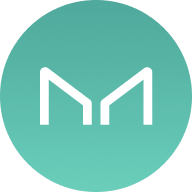
Arbitrum price

Disclaimer
OKX does not provide investment or asset recommendations. You should carefully consider whether trading or holding digital assets is suitable for you in light of your financial condition. Please consult your legal/tax/investment professional for questions about your specific circumstances. For further details, please refer to our Terms of Use and Risk Warning. By using the third-party website ("TPW"), you accept that any use of the TPW will be subject to and governed by the terms of the TPW. Unless expressly stated in writing, OKX and its affiliates (“OKX”) are not in any way associated with the owner or operator of the TPW. You agree that OKX is not responsible or liable for any loss, damage and any other consequences arising from your use of the TPW. Please be aware that using a TPW may result in a loss or diminution of your assets. Product may not be available in all jurisdictions.
Arbitrum market info
Market cap = Circulating supply × Last price

ARB calculator


Arbitrum price performance in USD
Popular Arbitrum conversions
| 1 ARB to USD | $0.33370 |
| 1 ARB to EUR | €0.29386 |
| 1 ARB to PHP | ₱18.8402 |
| 1 ARB to IDR | Rp 5,633.97 |
| 1 ARB to GBP | £0.25120 |
| 1 ARB to CAD | $0.46265 |
| 1 ARB to AED | AED 1.2257 |
| 1 ARB to VND | ₫8,683.32 |
About Arbitrum (ARB)
- Official website
- Github
- Block explorer
Latest news about Arbitrum (ARB)



Learn more about Arbitrum (ARB)



Arbitrum FAQ
Offchain Labs, the creator of the Arbitrum protocol, was founded by Ed Felten, Steven Goldfeder, and Harry Kalodner. These founders bring extensive computer science and blockchain technology expertise accumulated through years of experience in the computer and tech industry. Their collective knowledge and innovative approach have been instrumental in the development and success of the Arbitrum project.
Arbitrum improves scalability by implementing Optimistic Roll-ups, a technology that allows transactions to be processed off-chain. Transactions are bundled together and verified on-chain in batches, significantly increasing Ethereum's throughput. With Optimistic Roll-ups, Arbitrum has the potential to achieve transaction speeds of up to 4800 transactions per second (TPS), greatly enhancing the scalability of the Ethereum network.
Easily buy ARB tokens on the OKX cryptocurrency platform. An available trading pair in the OKX spot trading terminal is ARB/USDT.
Monitor crypto prices on an exchange
ESG Disclosure
ARB calculator


Disclaimer
OKX does not provide investment or asset recommendations. You should carefully consider whether trading or holding digital assets is suitable for you in light of your financial condition. Please consult your legal/tax/investment professional for questions about your specific circumstances. For further details, please refer to our Terms of Use and Risk Warning. By using the third-party website ("TPW"), you accept that any use of the TPW will be subject to and governed by the terms of the TPW. Unless expressly stated in writing, OKX and its affiliates (“OKX”) are not in any way associated with the owner or operator of the TPW. You agree that OKX is not responsible or liable for any loss, damage and any other consequences arising from your use of the TPW. Please be aware that using a TPW may result in a loss or diminution of your assets. Product may not be available in all jurisdictions.











Socials